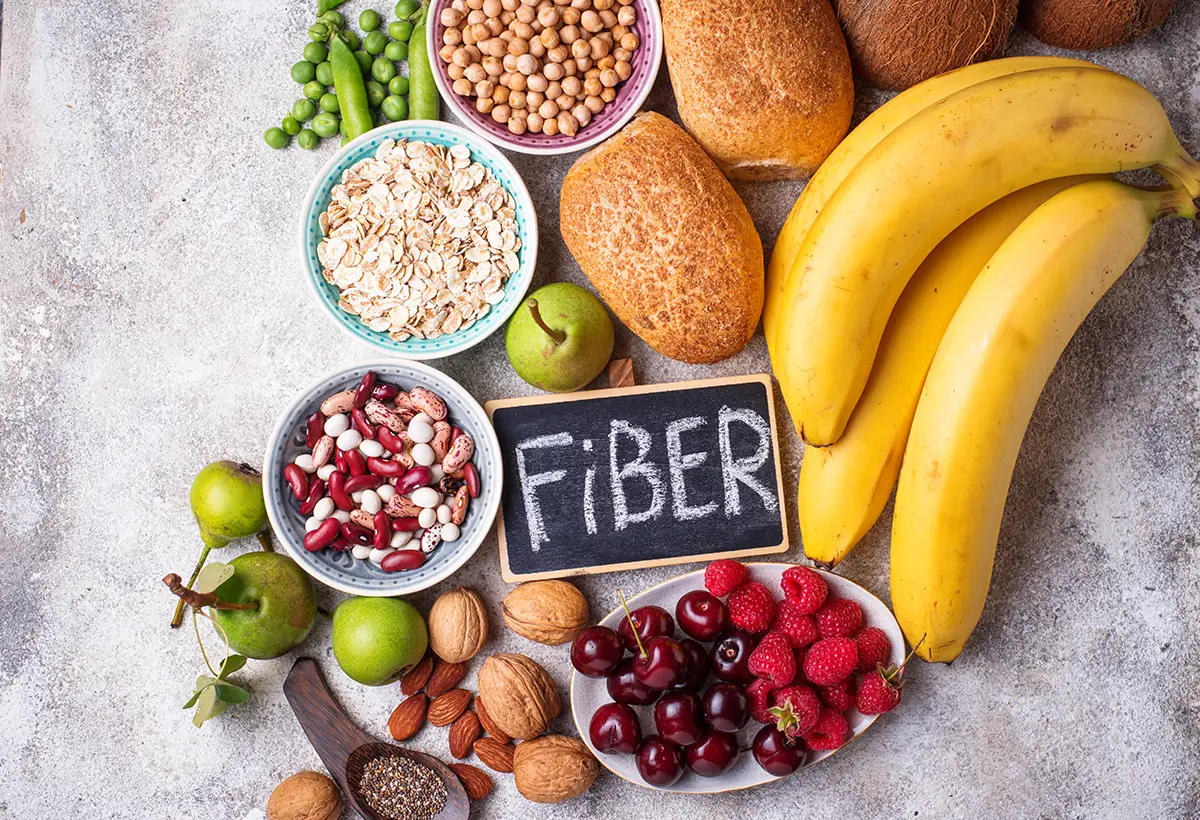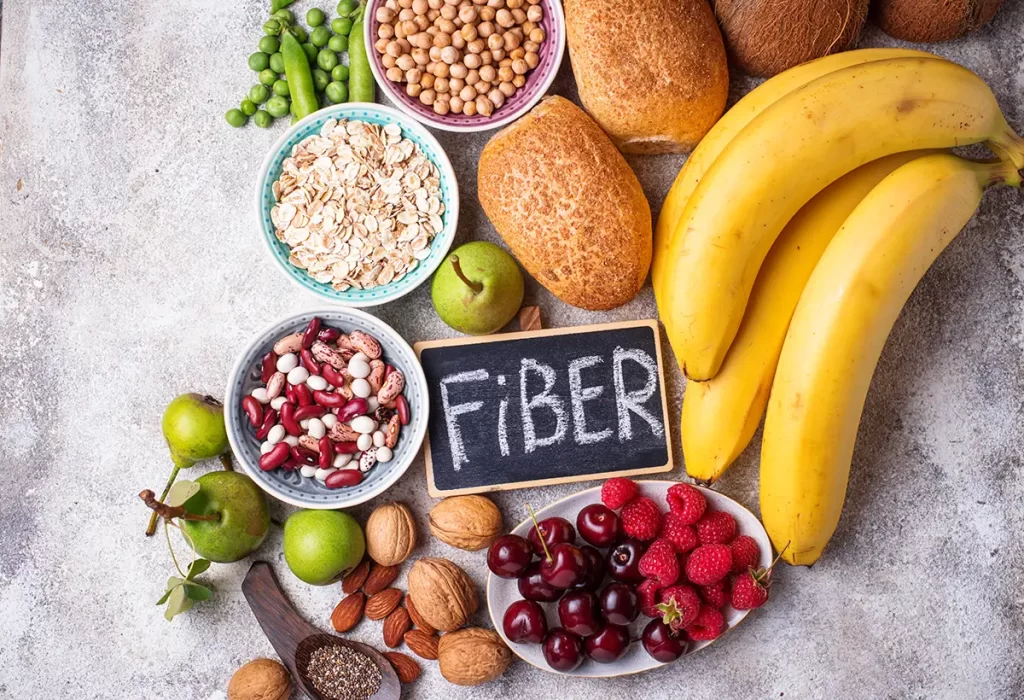You may have seen chia puddings and meals full of beans going viral on TikTok. There is a scientific explanation why “fibermaxxing” is becoming so popular, even though it seems like a silly trend. Could this be the one health trend that experts really like?
What is Fibermaxxing?
Fibermaxxing is basically eating more fiber than normal, usually meeting or beyond the daily required amount.
It’s about making meals with foods high in fiber, like fruits, vegetables, beans, lentils, seeds, nuts, and whole grains, and occasionally adding supplements like psyllium husk.
Instead than thinking of it as a rigorous diet, think of it as a plan: get as much fiber as you can without eliminating out whole groupings of foods.
Why Fibermaxxing is Important
93% of people in the US don’t get enough fiber every day.
If you don’t eat enough fiber, you are more likely to get heart disease, colon cancer, diabetes, and obesity.
Eating more meals high in fiber could help with digestion, keep blood sugar levels stable, and possibly make you feel better.
To put it simply, most people don’t have enough of this nutrient. Fibermaxxing covers the gap.
What Fiber Maxxing Does For You
Pamela Corral, who is 25 years old and makes content, had millions of views on her TikTok videos about chia seed puddings. “I try to eat it a lot so I can make videos,” she remarked.
What began as a health experiment rapidly turned into proof that consumers enjoy easy, relevant fiber hacks.
Fibermaxxing is not a word used in medicine. It’s a Gen-Z style label on an old truth: fiber is important.
The phrase started on TikTok and X (Twitter) and quickly spread to the mainstream wellness culture. Dietitians genuinely support fibermaxxing, but only when it’s done safely. This sets it apart from other crazy trends.
The Main Things You Should Know About Fibermaxxing:
- Slows down the absorption of carbs to control blood sugar.
- Lowers cholesterol, which is good for heart health.
- Helps with digestion and stops constipation.
- As a prebiotic fuel, it helps the gut bacteria.
- Helps with weight management by making you feel full.
- May decrease the risk of colon cancer.
Dietitian Jennifer Bianchini adds, “Fibermaxxing can be completely safe and very helpful if done correctly.” “The most important thing is to slowly raise the amount and drink more water.”
What People Think vs. What Really Is
❌ Myth: More fiber is usually better. ✅ Truth: Too much, too soon can make you feel bloated, cramp, or constipated.
❌ Myth: Fiber powders can take the place of complete foods. ✅ Truth: Supplements assist, but fruits, veggies, and grains include vitamins and phytochemicals that powders don’t.
❌ Myth: Cooking kills fiber. ✅ Truth: You don’t lose much fiber when you cook; you lose the most when you juice.
How to Fibermaxx Safely
- Take it easy at first. Increase by 5 grams each week until you reach 25–38 g/day.
- Drink water. Water is the best buddy of fiber.
- Variety is important. Combine fiber that dissolves in water with fiber that doesn’t.
- Eat a rainbow. Different hues mean different nutrients for plants.
- Pick entire foods first. Only take vitamins if you need them.
Smartly swap:
- Instead of white rice, use quinoa or brown rice.
- Pasta made with chickpeas or whole grains instead of regular pasta.
- Whole grain bread instead of white bread.
- A handful of nuts, an apple with the skin on, or veggie sticks are all good sources of fiber for snacks.
Five things you didn’t know about Fibermaxxing
- Only 7% of people in the US get enough fiber every day.
- Fiber feeds the microorganisms in your stomach, which makes short-chain fatty acids that affect your mood and immune system.
- Eating fiber may cut your risk of getting colorectal cancer by as much as 13%.
- Eating a lot of fiber may help your mental health by raising serotonin levels.
- Too much fiber (50–100 g/day) can keep your body from absorbing nutrients.
FAQ
What does it mean to fibermax?
It’s a term used on social media to mean eating more fiber on purpose, sometimes more than the daily recommended amount.
How much fiber do I need to eat every day?
Depending on age and gender, 25 to 38 grams.
Can I get all the fiber I need from supplements?
Not really. Whole foods have more vitamins, minerals, and antioxidants.
Is fibermaxxing safe?
Yes, but you need to start slowly and drink a lot of water. If you have a stomach problem, you should see a doctor.
What are the differences between soluble and insoluble fiber?
Soluble substances like oats, beans, and chia dissolve in water, whereas insoluble substances like whole grains and veggie skins add bulk.
Can kids fibermaxx?
Kids don’t require as much fiber, so talk to a pediatrician before changing their meals.
What meals are ideal for getting the most fiber?
Whole grains, beans, lentils, chia seeds, avocados, berries, leafy greens, and nuts.
What happens if I eat a lot of fiber?
Gas, bloating, cramps, or diarrhea. Problems with absorbing nutrients in uncommon cases.
⚠️ Warning: This material is not medical advise; it is merely for information. Before making any changes to your diet, always talk to a doctor.




